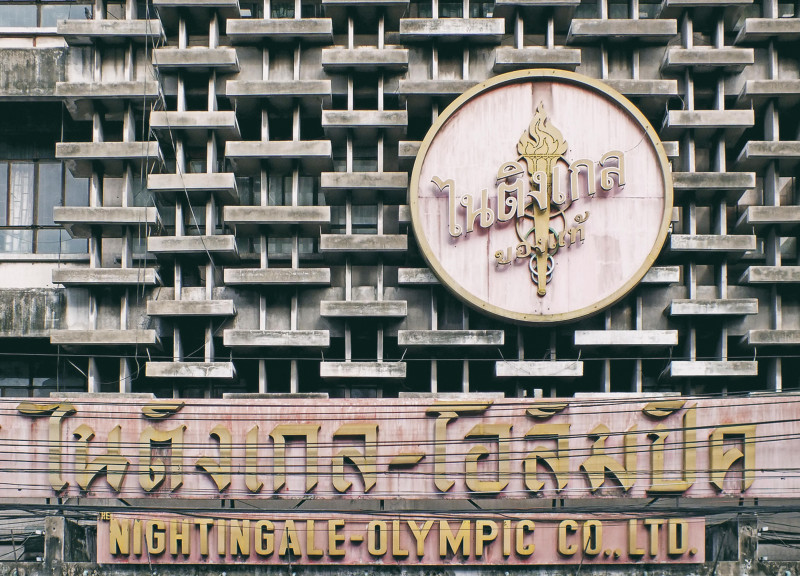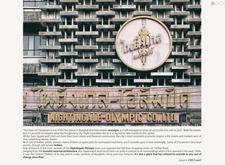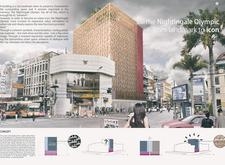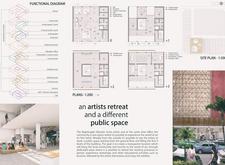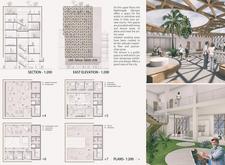5 key facts about this project
This project represents a renewal of the urban environment, addressing the challenges of a historical site while providing a contemporary venue for artistic expression. It reinterprets the locale's rich narrative, commemorating the heritage of post-war Bangkok while simultaneously looking towards the future. The Nightingale Olympic functions as a key resource for artists and the public, creating a setting for workshops, exhibitions, and community gatherings. Its purpose extends beyond simply housing activities; it aims to cultivate a sense of belonging and collaboration within the local community.
One of the standout elements of the design is its creative use of materials, which reinforces its connection to the environment. Concrete remains prominent, linking the project to the traditional urban fabric of Bangkok while providing structural integrity. The introduction of wood offers warmth and a tactile quality to the architecture, establishing a balance between the coldness of the concrete and the comfort of natural materials. Large glass panels enhance transparency, allowing for ample natural light and creating visual connections with the surrounding cityscape. This choice highlights the interplay between the indoors and outdoors, encouraging a seamless flow of movement and activity.
The incorporation of metal elements further contributes to the building's modern character while ensuring durability. One of the most notable features is the distinctive lattice façade. This design not only serves an aesthetic purpose, offering a modern look that differentiates the structure from its surroundings, but it also provides functional benefits. By allowing light and air to filter through, it minimizes energy consumption while maximizing comfort for occupants. The interplay of solid and void creates an engaging visual rhythm, inviting exploration and curiosity.
Unique design approaches within the Nightingale Olympic include an emphasis on flexibility in space usage. The interior layout is expertly crafted to accommodate various activities, ensuring that the facility can adapt to the evolving needs of the community. The open and programmable spaces encourage spontaneous gatherings and collaborative projects, fostering an atmosphere of creativity. In addition to this spatial versatility, the building incorporates green elements such as potted plants and vertical gardens, promoting biophilia and enhancing the overall user experience.
The Nightingale Olympic's architectural design represents a promising evolution of urban space, merging artistic endeavor with community function. It acts as a reflection of societal values by prioritizing connection, interaction, and sustainability. As a centerpiece in the vibrant context of Chinatown, the project reinforces the importance of architecture in shaping and enriching community dynamics.
To explore the full potential of the Nightingale Olympic, readers are encouraged to delve into its architectural plans, sections, designs, and innovative ideas. Each aspect of the project provides valuable insights into how thoughtful architecture can redefine urban experiences and contribute to the cultural fabric of a city. Discover the intricate details and overarching concepts that make this project a notable addition to Bangkok's architectural landscape.


